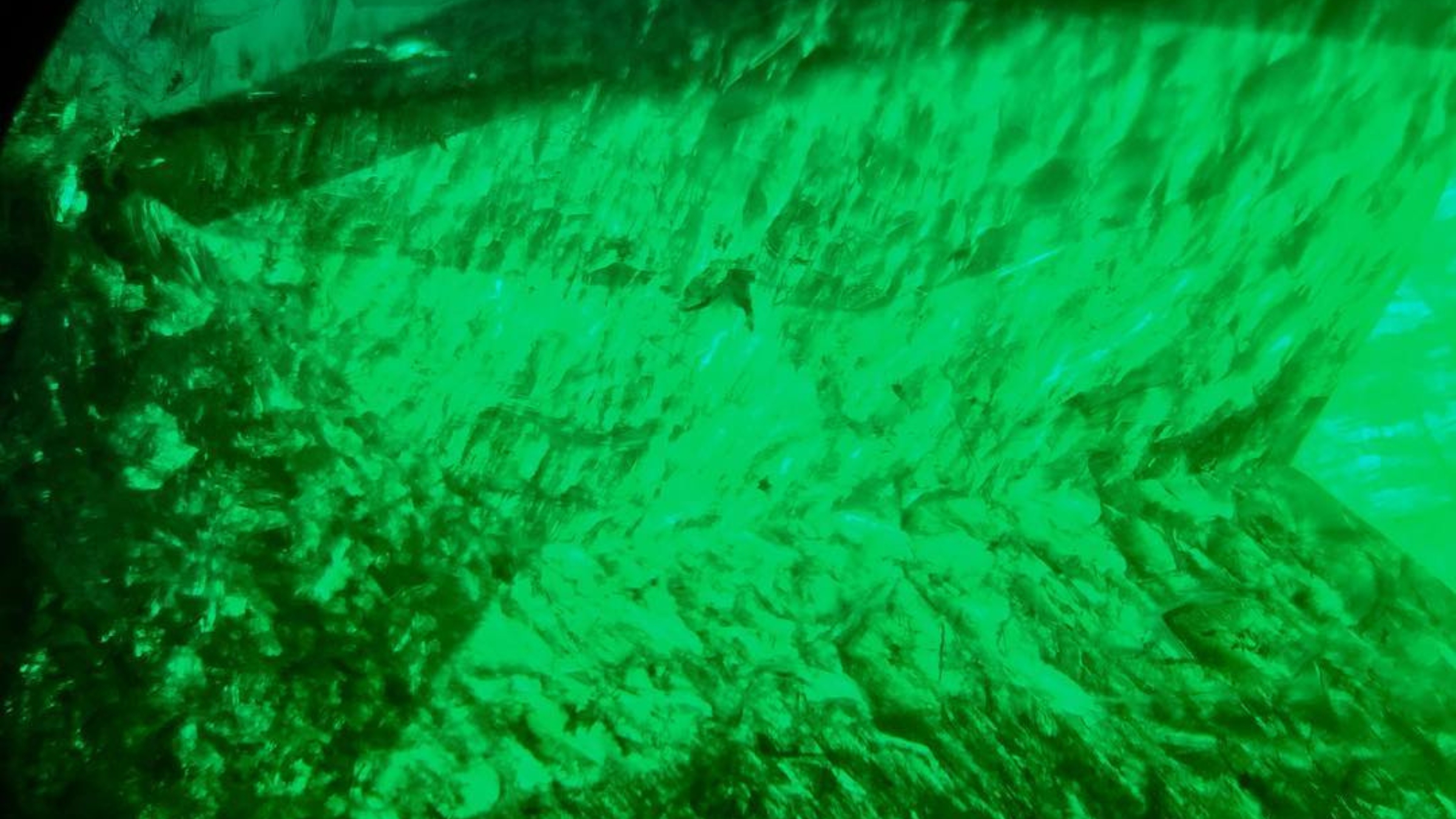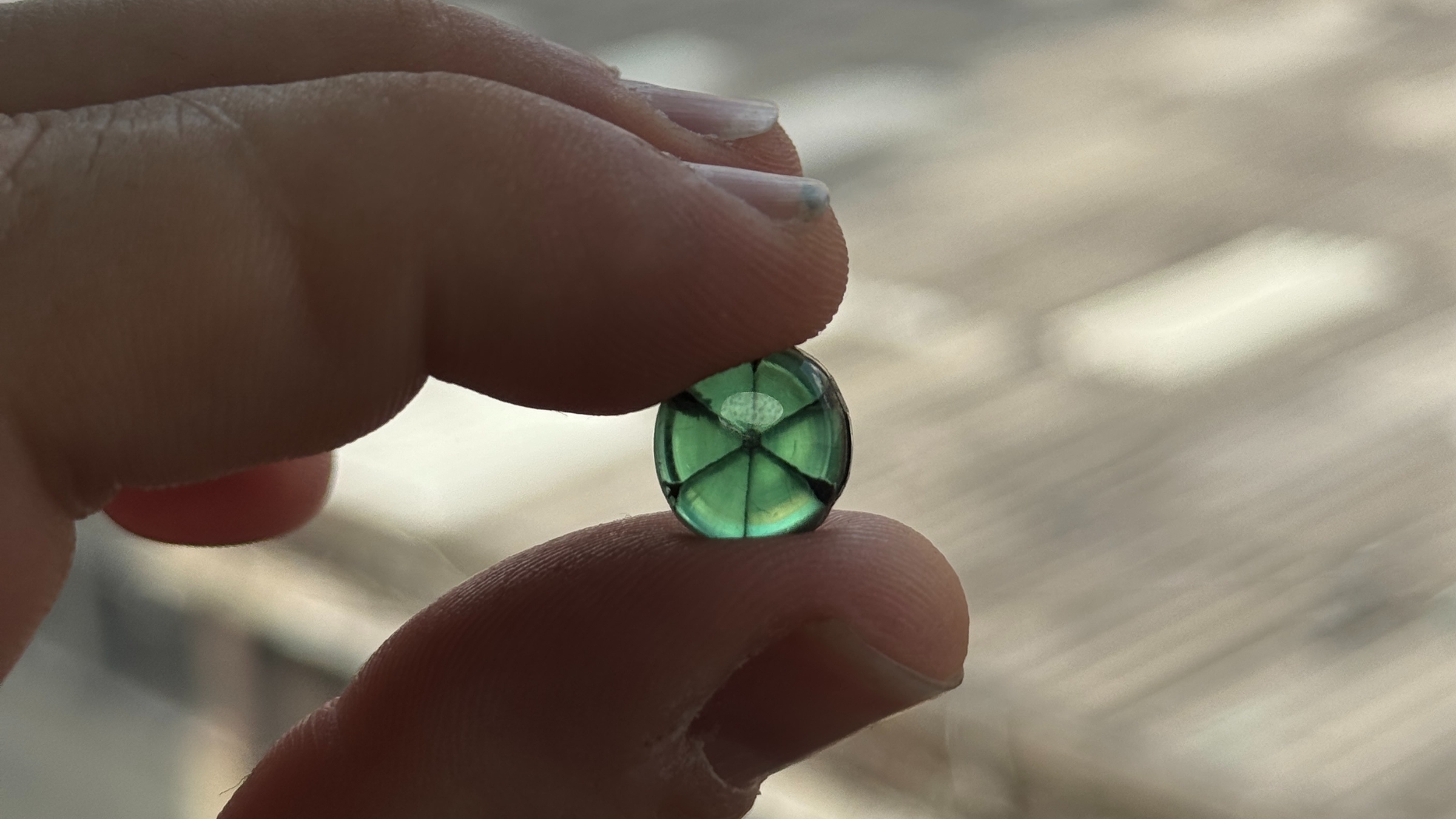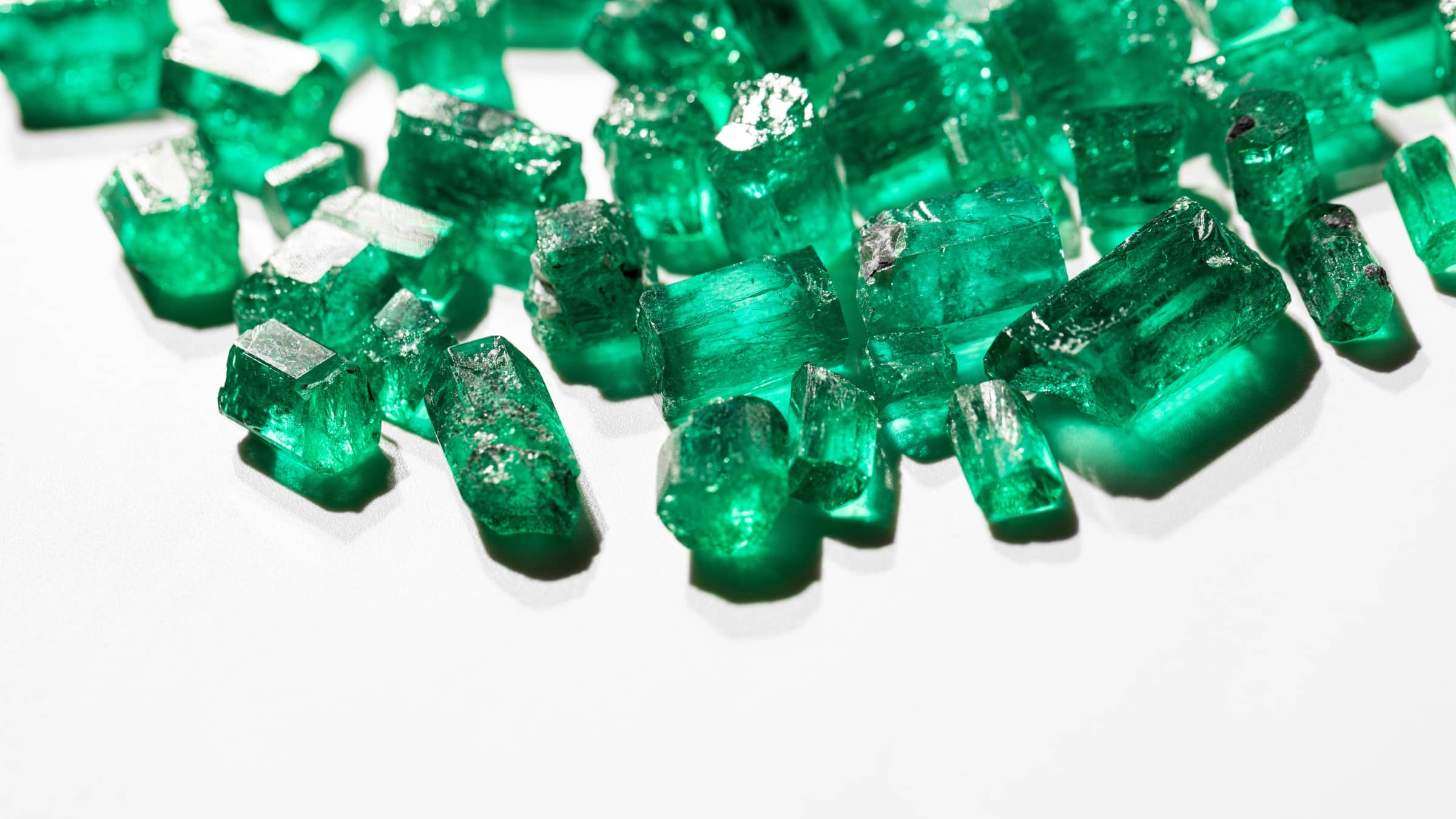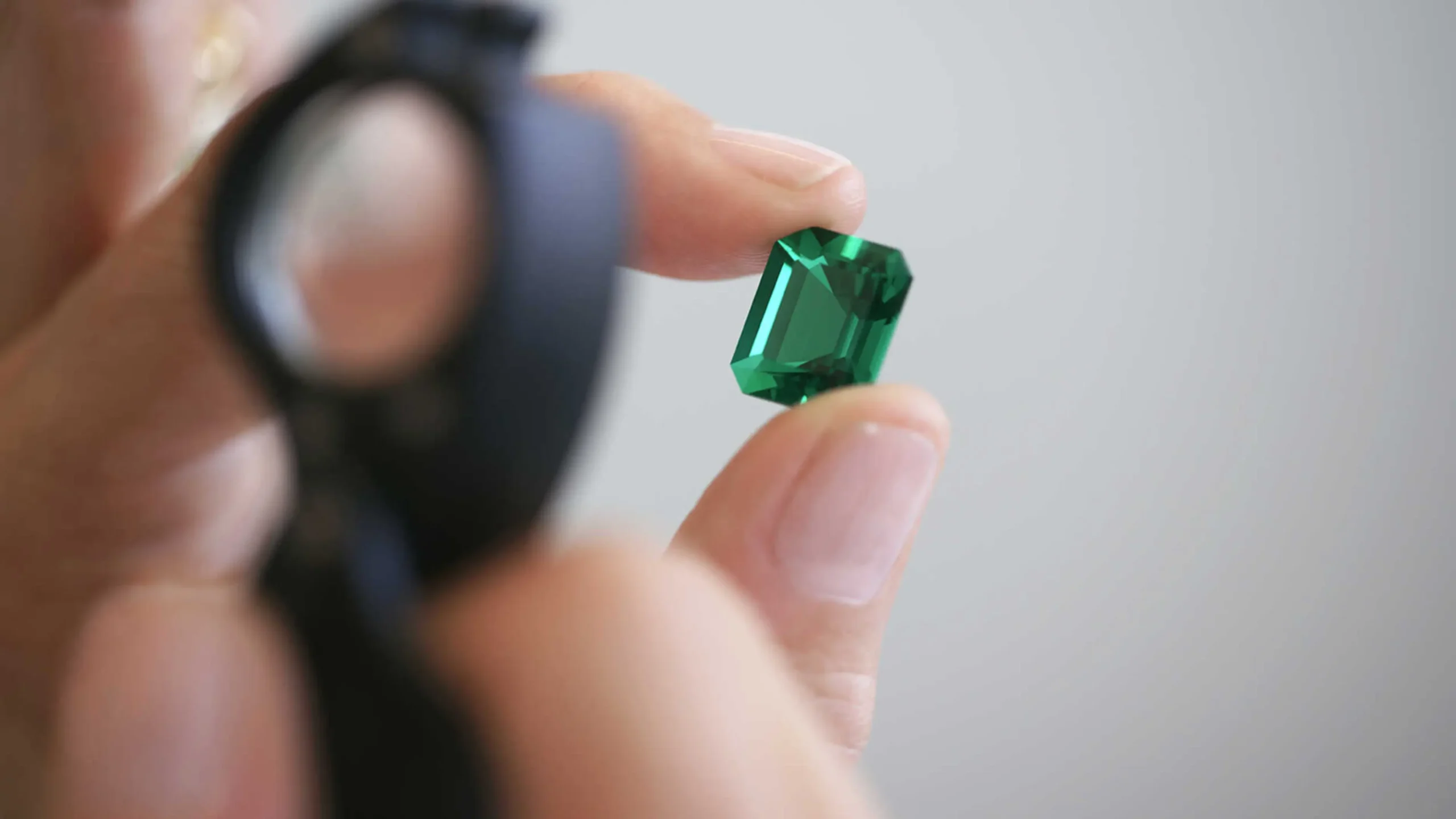Among the wonders of gemology, the Gota de Aceite effect occupies a special place. Present exclusively in certain Colombian emeralds, this delicate optical phenomenon, often described as a liquid veil frozen in the stone, fascinates collectors and experts alike. But what exactly is this effect? Why is it so rare? And how can we really recognize it?
Gota de Aceite: a visual texture born of stone structure
The Gota de Aceite effect, literally “drop of oil” in Spanish, manifests itself as a uniform diffusion of light within the gem, creating a soft, fluid visual sensation. This optical peculiarity is not due to an inclusion, but to microscopic irregularities in the emerald’s crystalline structure – internal geometric shapes such as hexagons or fine depressions that subtly disrupt the reflection of light.
Contrary to some early hypotheses attributing this effect to calcite precipitates, recent studies, notably those by renowned gemologist John Koivula, have demonstrated the absence of calcite in the stones concerned, using Raman spectroscopy. The Gota de Aceite effect is therefore a direct consequence of the complex and unstable crystallization conditions of certain emeralds, a purely natural and structural phenomenon.
Gota de Aceite: where to find it and how to identify it?
The presence of the Gota de Aceite effect is strongly correlated with emeralds extracted from the Muzo mines in Colombia. Although it can appear in gems from Coscuez or Peñas Blancas, these occurrences remain exceptional. The rarity of the effect is such that less than one emerald in a thousand displays a distinct effect.
To identify a genuine “Gota de Aceite” emerald, simple observation with the naked eye is not always enough. Professionals use a 10x magnifying glass or a gemological microscope to confirm the presence of an internal fluid texture, visible when the stone is tilted under direct light. The effect is classified into three intensities: attenuated, moderate or pronounced, depending on the sharpness and homogeneity of the light diffusion.
It’s important to note that the cut of the stone also influences the visibility of the effect: if the zone responsible is parallel to the table, the effect will be maximized. On the other hand, incorrect orientation during cutting can render the phenomenon virtually invisible, even if it is present in the material.
A term often misused
The expression Gota de Aceite has undergone a certain semantic drift, particularly in commercial language. Some merchants mistakenly use it to designate beautiful emeralds, even without any trace of the specific optical effect. Others associate it with the famous “Old Mine” stones from the first Spanish colonial mines – an unfortunate confusion.
As gemologist Ron Ringsrud reminds us, only a rigorous examination of the stone can justify the use of the term Gota de Aceite. It is not simply a subjective appreciation of the stone’s beauty, but a well-defined phenomenon associated with light scattering caused by internal growth structures, visible under gemmological observation.
An exceptional criterion in the emerald market
Emeralds with a Gota de Aceite effect enjoy sustained demand in the high-end segment of the market. Their rarity, combined with their unique optical softness, makes them particularly desirable. At equivalent color and purity, a “Gota de Aceite” emerald can achieve a significant premium in value.

But beyond its market value, this effect is also highly symbolic: it testifies to an ideal crystallization, an almost perfect nature, which cannot be artificially reproduced. For discerning collectors, it is a marker of authenticity and nobility, both discreet and prestigious.
Gota de Aceite, the signature of Colombian excellence
At the crossroads of science, aesthetics and natural history, the Gota de Aceite effect illustrates the magic of the great Colombian emeralds. This rare optical phenomenon, discreet yet bewitching, embodies a form of mineral perfection that only a few specimens reveal. Far from being a mere marketing label, it represents tangible proof of the geological singularity of Colombian emeralds, and a real reward for discerning eyes.

















